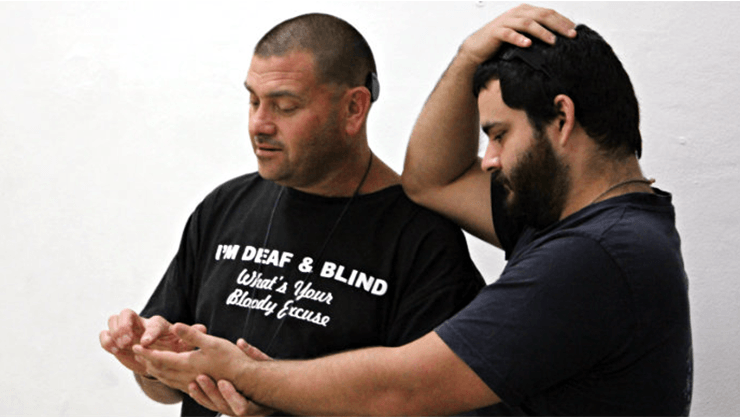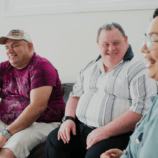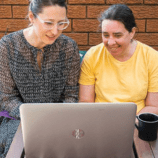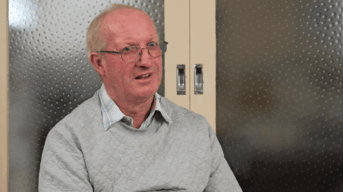
Deafblind peers rolling up their sleeves and getting things done
“We get out there, roll up our sleeves and try new things… it’s great to be able say we’ve done that, we’ve swam with sharks and rays, we’ve been indoor rock climbing.”
Jex Truran-Lakaev is the man behind the Hunter Deafblind Peers, which is the first and only group of its kind in the area.
He uses Auslan visual frame* and tactile* finger spelling to communicate.
“I’ve had Usher syndrome my entire life. Being involved in the deaf community while my eye sight was great was one thing, but as my eyesight deteriorated I found it harder and harder to communicate,” he explains.
Getting started
When Jex moved up from Wollongong, he didn’t know any deafblind people in the area. He was keen to meet others but didn’t know how.
With the help of Justine Lorenz, they reached out to people in a similar situation, and so the group was born.
The group has five members: Jex, Anne, Peter, Stephen and Geoff who all use different modes of communication.
“It took a while for us to get used to each other and figure out how to communicate with each other effectively,” says Jex.
Stephen and Geoff are learning tactile finger spelling and Auslan to ensure easier communication with the others.
Lack of interpreters
Justine has been supporting the group from the beginning. She says that getting interpreters is always the biggest challenge.
“For a two hour information session, the group needs six interpreters. We need four deafblind interpreters to come up from Sydney because there is not enough in the local area,” Justine explains.
If a session is more than an hour long, two interpreters are needed to allow for rest breaks.
“It is extremely expensive to travel interpreters from out of the area.While most of the group have NDIS packages, funding is limited. They can be restricted when deciding what to do during their sessions because an outing for the whole day is a huge cost.”
Swimming with sharks
The group’s sessions vary greatly in terms of topics and activities with previous workshops on diabetes and healthy eating as well as emergency services training.
“We’ve been down to the fire station to get emergency services information… because how will we know when there is an emergency? So we got some information from them and they got some information from us,” Jex explains.
The group members don’t shy away from extreme sports either.
“A lot of deafblind people live in isolation and never get to experience things that other people take for granted. We get out there, roll up our sleeves and try new things… it’s great to be able say we’ve done that, we’ve swam with sharks and rays, we’ve been indoor rock climbing.”
Role models
Jex puts his confident and outgoing personality down to the people who influenced him as a child.
“I had exposure to very positive deafblind role models from a young age, so I had a better idea what my life might look like and how I might be able manage things,” he says.
“I think that’s a very important thing… to understand that life’s going to be ok.”
“We exist”
The group are in the process of making a film to raise awareness about deafblindness. Watch the video below.
“It’s about letting people know we exist. Even though we are deafblind we just communicate in different ways… we go about things differently to achieve the same outcomes,” Jex says.
“I think most people have absolutely no idea that we exist, let alone how we go about things. We want to let people know what they can do to help make the world a bit easier for us to navigate.”
Links
Hunter Deafblind Peers received a grant from Team Up for their film project.
If you want to learn more about peer support, email us at info@cid.org.au or call us on 1800 424 065.
*Visual frame
Visual frame is used usually because vision is restricted to a small area. This may be due to a central vision loss or a peripheral vision loss. If visual frame is used then the distance from the receiver may need adjusting.
Signing must be kept within a smaller frame so that the hands do not disappear from sight. Signing is best understood when slowed down and kept to a smooth, relaxed pace.
*Tactile
Tactile signing is used when there is little to no vision left to be able to see handshape or movement With the hands of the Deafblind person placed on the hands of the interpreter Auslan is used.
Definitions from Able Australia.



 1800 424 065
1800 424 065 














